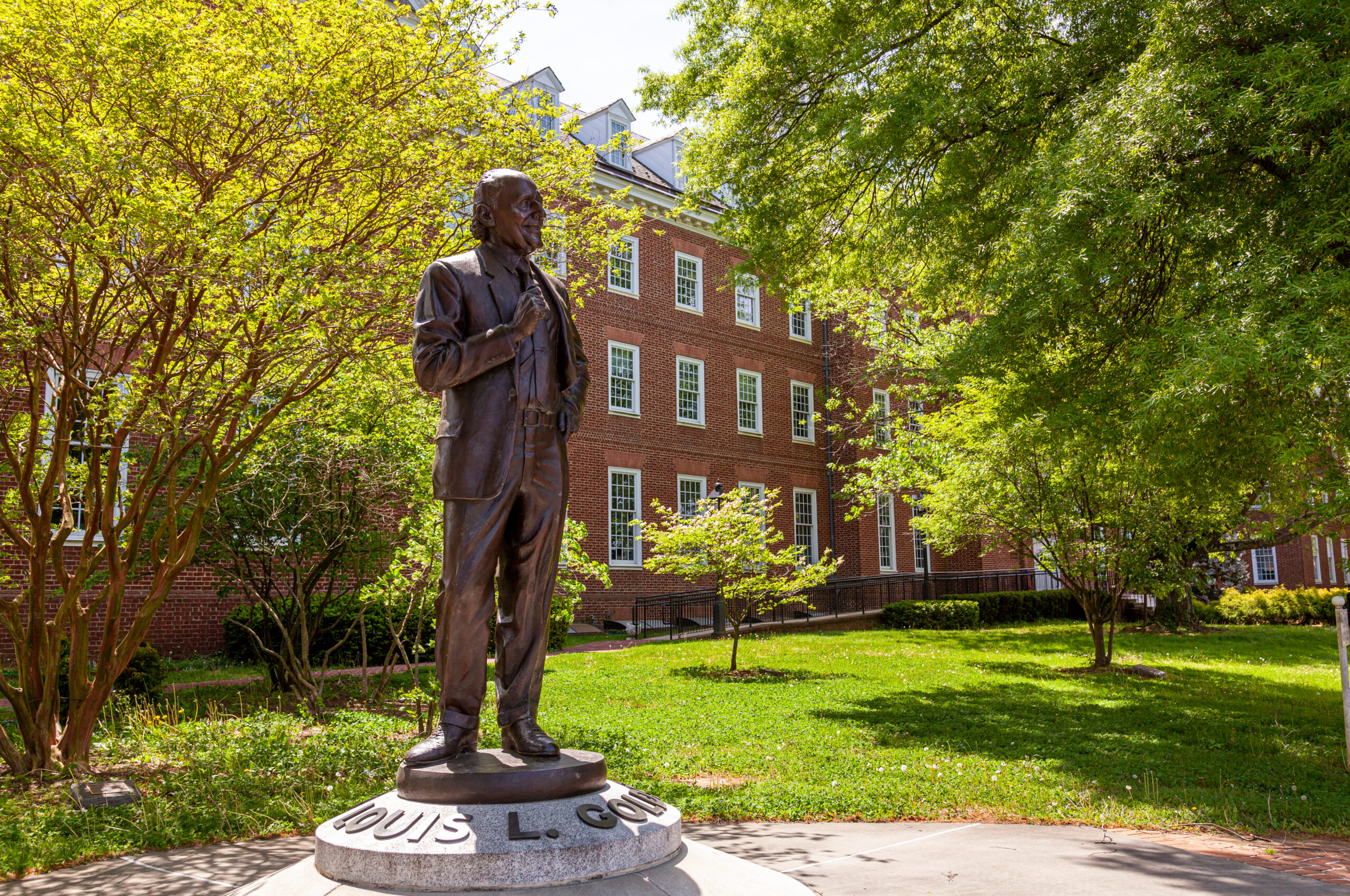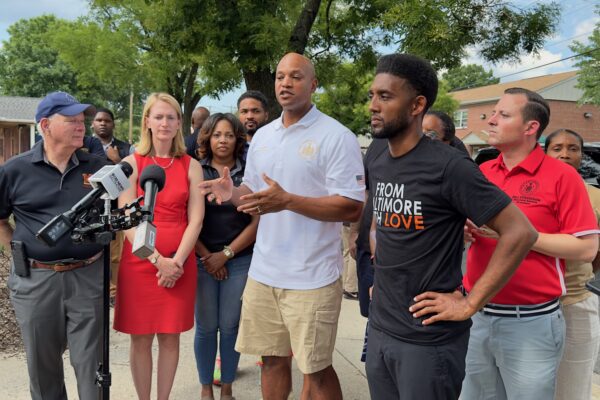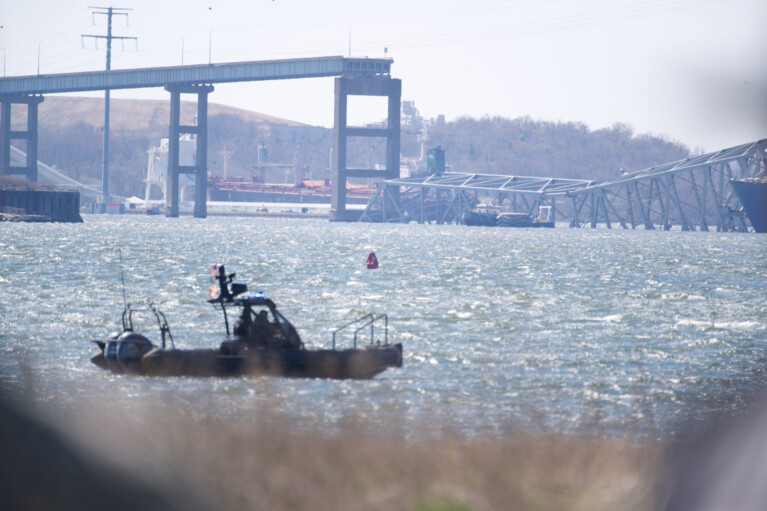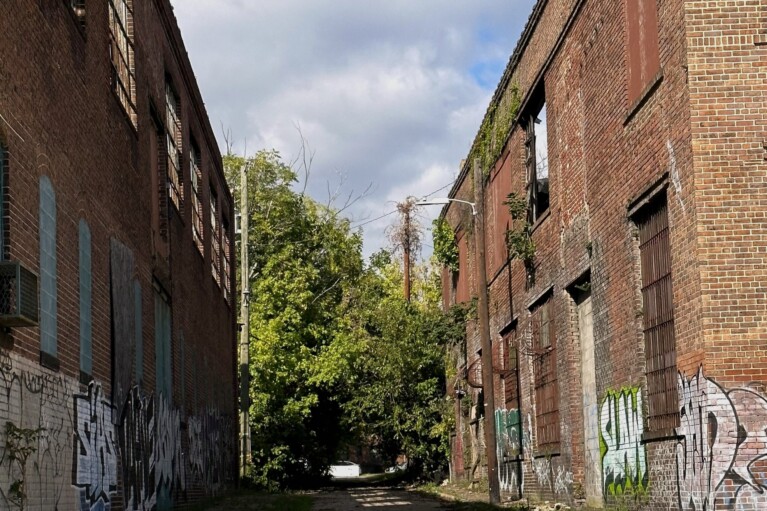Josh Kurtz: Recalling Maryland’s July 4 weekend in 1998 — and comparing it to 2023

Maryland was about to settle into a nice, quiet Fourth of July weekend. And while among the chattering classes there was some anticipation for the candidate filing deadline to come on July 6, Maryland political leaders were settling in for a quiet weekend as well.
This was in 1998. What followed was anything but quiet or orderly. And it’s easy to see that the chaotic events of that oft-forgotten weekend and the days that followed are still reverberating in Maryland politics today.
The night of Friday, July 3, brought shocking news: Louis Goldstein (D), Maryland’s comptroller since 1959, and revered in state politics, dropped dead by his Calvert County swimming pool at the age of 85.
Though he was certain to waltz to an easy 11th term — only a Republican named Larry Epstein, who had been the GOP nominee in 1990, had filed to run against him — Goldstein’s death 72 hours before the filing deadline meant several prominent Maryland politicians had big decisions to make quickly.
No one had a bigger decision than Gov. Parris Glendening (D), who was facing a tough rematch against Republican Ellen Sauerbrey but first had to get through a gnarly September Democratic primary against then-Harford County Executive Eileen Rehrmann and retired football star Ray Schoenke. So Glendening had to weigh not only who to appoint to serve for the remainder of Goldstein’s term as comptroller, but who would make a companionable ticket mate that November.
Politicians’ phone lines burned up all weekend, and Glendening and his lieutenants checked in with a range of Democratic leaders. Glendening made overtures to then-U.S. Rep. Ben Cardin and then-state Senate Budget and Taxation Committee Chair Barbara Hoffman about taking the job, but both demurred.
Eventually, Glendening settled on then-Montgomery County Executive Doug Duncan, a rising star in state politics who was seeking a second term basically unchallenged, for the comptroller’s job. Duncan and Glendening spoke three times on Sunday, July 5, and Duncan said he’d have to sleep on it and would get back to Glendening Monday morning, with the filing deadline at 9 p.m. that night.
Meanwhile, former Gov. William Donald Schaefer (D), who disliked Glendening and hated being out of the political limelight even more, let his successor know that he might be interested in the appointment and in running for a term as comptroller himself. But when Glendening told Schaefer that Duncan was his choice, Schaefer, 76, endorsed the idea and asked Glendening to get in touch again if Duncan declined the offer.
By many accounts, Glendening never did.
Duncan chose to run for reelection and eventually, Glendening turned to former U.S. Rep. Michael Barnes, who had represented Montgomery County in Congress from 1975 to 1987, to become comptroller. While some powerful Baltimore politicians groused that Glendening was dissing the city — Baltimore pols used to have the influence to speak freely like that back in those days — no less an eminence than U.S. Sen. Barbara Mikulski, who had defeated Barnes in the Democratic Senate primary a dozen years earlier, said she was “delighted” with the pick, and spoke of her former rival’s integrity.
Barnes dutifully filed at the board of elections (then known as SABEL, the State Administrative Board of Election Laws) that Monday to compete in the September Democratic primary. So did Baltimore City Comptroller Joan Pratt. So did former state Sen. Julian Lapides. And so did once and future Baltimore City Councilmember Mary Pat Clarke.
Three other credible candidates joined Epstein in the GOP primary: Tim Mayberry, an accountant from Western Maryland who had been the Republican nominee against Goldstein in 1994; Ardath Cade, a veteran government official and civic activist from Anne Arundel County who was the widow of the late Senate minority leader, John Cade; and Michael Steele, then a rising star in Republican politics who was chair of the Prince George’s County GOP. Sauerbrey quickly endorsed Steele.
But all day, as Goldstein’s body lay in state in the State House, and the glamorous Schoenke was exiting the gubernatorial primary, there were rumors about what Schaefer was going to do, and he clearly was enjoying the attention. Eventually, around 7:30 that evening, Schaefer and his entourage turned up at the old SABEL offices in a converted armory on Rowe Boulevard, and with the attendant media circus that Schaefer always loved, he declared that he would be a candidate for comptroller.
But he left himself an out: The deadline for declared candidates to pull out of a race was still 10 days away, and Schaefer said he would continue to mull over whether he really wanted a political comeback. But of course, he did.
“I’m very energized,” he said on July 7. “Life was OK, but this has got me pepped up.”
And when it became apparent that Schaefer really was going to run for a full term as comptroller, Barnes, who had been sworn into the job and served for about a minute and a half, resigned his post and withdrew from the race. Clarke and Lapides also dropped out.
Glendening was forced to publicly insist that he was happy with the result, and maybe he was. A lot of Schaefer Democrats had gravitated to Sauerbrey in 1994, when Glendening beat her by fewer than 6,000 votes, so Glendening may have concluded that having his predecessor’s fans nominally on his side for the 1998 general election would be a political windfall.
In the interim, he appointed Bobby Swann, Goldstein’s loyal longtime deputy, to serve as comptroller for the remaining half year of Goldstein’s term.
But if the scene at SABEL was surreal on July 6, even more surreal was Schaefer’s early morning campaign kickoff on July 13, at the dreary old Best Western near the Interstate 95 toll booths in Baltimore, which Glendening and his lieutenant governor, Kathleen Kennedy Townsend, attended. The room was packed full of Schaefer intimates – many of whom sought a restoration. They considered Glendening, the wonky University of Maryland professor from Prince George’s County who was clearly not one of them, an illegitimate leader.
“It’s like old-times week,” a beaming John Paterakis Sr., the Baltimore bakery baron, told The Washington Post.
It was hard, at that moment, to tell who was actually governor.
And the rest is history. Glendening and Schaefer more or less tolerated each other through the fall, campaigning cordially together at the Crisfield crab feast, but it went south from there. Board of Public Works meetings became must-attend events — mainly to witness the vitriol Schaefer threw at Glendening again and again, including essentially outing the governor’s extramarital affair with a top aide in 2001.
Schaefer Democrats morphed into Ehrlich Democrats, contributing to Townsend’s defeat in the 2002 gubernatorial election (as did Glendening’s low poll ratings that year). Many later became Hogan Democrats.
Schaefer served until 2006, when he was defeated in the Democratic primary by state Del. Peter Franchot, who complained that the comptroller had grown too cozy with the Republican governor (a charge later thrown at Franchot). Steele lost the Republican primary for comptroller to Epstein in 1998, but became state Republican chair two years later and lieutenant governor two years after that. His career trajectory has taken some surprising turns since.
Barnes has continued to serve the public admirably in a variety of capacities, including as co-chair of the board of the Office of Congressional Ethics. But he never sought political office again.
The world keeps spinning on its axis — albeit a little off-kilter, thanks to climate change. But that significant July 4 weekend and the days that followed were really wild, the fall-out long lasting.
And yet…compare that July 4 weekend with the calamitous events of the July 4 weekend this year in Maryland. Two people dead, 28 wounded, in a mass shooting in Baltimore that’s still nowhere near to being solved. Another mass shooting that same night in Salisbury, with one dead and six wounded.

Gov. Wes Moore (center) and Mayor Brandon Scott (right) speak to reporters outside the Brooklyn Community Center on July 4. Photo by Bryan P. Sears.
Sure, there are political implications — particularly for Baltimore Mayor Brandon Scott (D), but also for Baltimore City State’s Attorney Ivan Bates (D) and for Gov. Wes Moore (D).
But two communities have been left devastated, an incalculable tragedy that will scar hundreds of people for life. Which serves as a sober reminder: Political intrigue may come and go, but the violent society we’ve constructed for ourselves leaves behind an endless stream of victims, especially in communities too used to being forgotten.
So while it’s fun to recall the events of July 4 weekend in 1998, it’s the July 4 weekend of 2023 that, sadly, will be in the history books.




 Creative Commons Attribution
Creative Commons Attribution